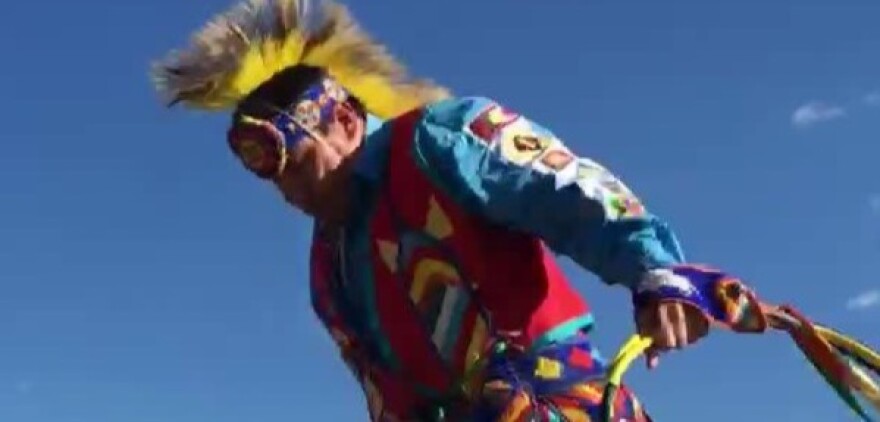EASTON, Pa. — For decades, Delwin Elk Bear Fiddler Jr. has shared knowledge on Native American culture and history.
Now Fiddler, a grass-and-hoop dancer, may expand on his teachings.
Dance/USA, a national organization that champions diversity and inclusion in the dance world, has recognized the longtime performer for his contributions.
Fiddler, of Easton, is among 50 finalists vying for the Dance/USA Fellowships to Artists program.
Now in its third iteration, the fellowship provides dance artists an unrestricted financial award of $31,000.
Established in 1982, Dance/USA champions an inclusive and equitable dance field by leading, advocating, and supporting individuals and organizations.
Fiddler will find out in October whether he's among 25 Dance/USA fellowship recipients.
Learning from his elders
Fiddler, a member of the Cheyenne River Sioux Tribe and Sans Arc band, grew up in South Dakota and began performing as a teen.
The Sans Arc are among the seven subdivisions of the Lakota people.
One of his mentors was the late Kevin Locke, a member of Lakota descent of the Standing Rock Sioux Tribe and a prominent flute player and hoop dancer.
"I had mentors who brought me under their wing when I was around 13 years old... It was a different type of introduction on how to present, and talk about the history and the knowledge of lands..."Dancer Delwin Elk Bear Fiddler Jr.
"I had mentors who brought me under their wing when I was around 13 years old and started doing presentations," Fiddler said.
"It was a different type of introduction on how to present, and talk about the history and the knowledge of lands, the significance of dancing, the history that ties into dancing, and why it's essential.
"Then I learned how to ask the audience to participate and teach others about our culture."
A move across lands, Jim Thorpe
Fiddler moved to the East Coast in the early 2000s.
Here, he started a dance company in Philadelphia and taught Native American ritual dances commonly performed at powwows — such as the hoop, eagle, buffalo, grass and chicken dances.
His performances, which he conducts at schools, Native American festivals and museums, are part dancing and part history lesson.
He studied the Native tribes of the thirteen colonies and can discuss the Native tribes in Pennsylvania and famous Native Americans such as Jim Thorpe.

In the heart of coal country, the Carbon County towns of Mauch Chunk and East Mauch Chunk merged in 1954 and changed their name to Jim Thorpe in honor of the Olympic gold medalist, who attended school in Pennsylvania and is buried in a mausoleum on North Street.
The name is not without controversy, as the Native American athlete's family fought for years to have his remains returned to them, and some locals have petitioned to have the original name of the town restored.
" If it weren't for Thorpe, we wouldn't even have what we call the NFL today," Fiddler said.
"A lot of people don't even know that there was a Native American football team that played against professional football players."
Dance as a 'spiritual' practice
Fiddler's art is not just for the masses — there's a cathartic component.
"For me, it's theatrical, but it's also a spiritual practice and a pathway for healing," he said. "The world could be very challenging at times.
"By doing this kind of thing, every day I wake up and pray, and when I do these presentations and participate in ceremonies, I connect those feelings to my ancestral connections and the history of the 13 colonies."
Part of his "pathway to healing" was displayed in the documentary "Without Arrows."
In the film, aired on PBS, Fiddler returns home to the reservation in South Dakota after spending a decade away, living on the East Coast.
"It's important for me to preserve the culture and talk about our lands — the lands that we pass by every day, these mountains and parks that we drive past and don't even think about."Dancer Delwin Elk Bear Fiddler Jr.
The documentary shows him reuniting with his parents, who live on the reservation.
While he dealt with family trauma on camera, the film opened more doors for Fiddler's career as an artist.
"I enjoy being an educator and bringing historical facts to my presentations, along with the dancing and storytelling that connect back to the roots of our Native American lands," he said.
"It's important for me to preserve the culture and talk about our lands — the lands that we pass by every day, these mountains and parks that we drive past and don't even think about."


